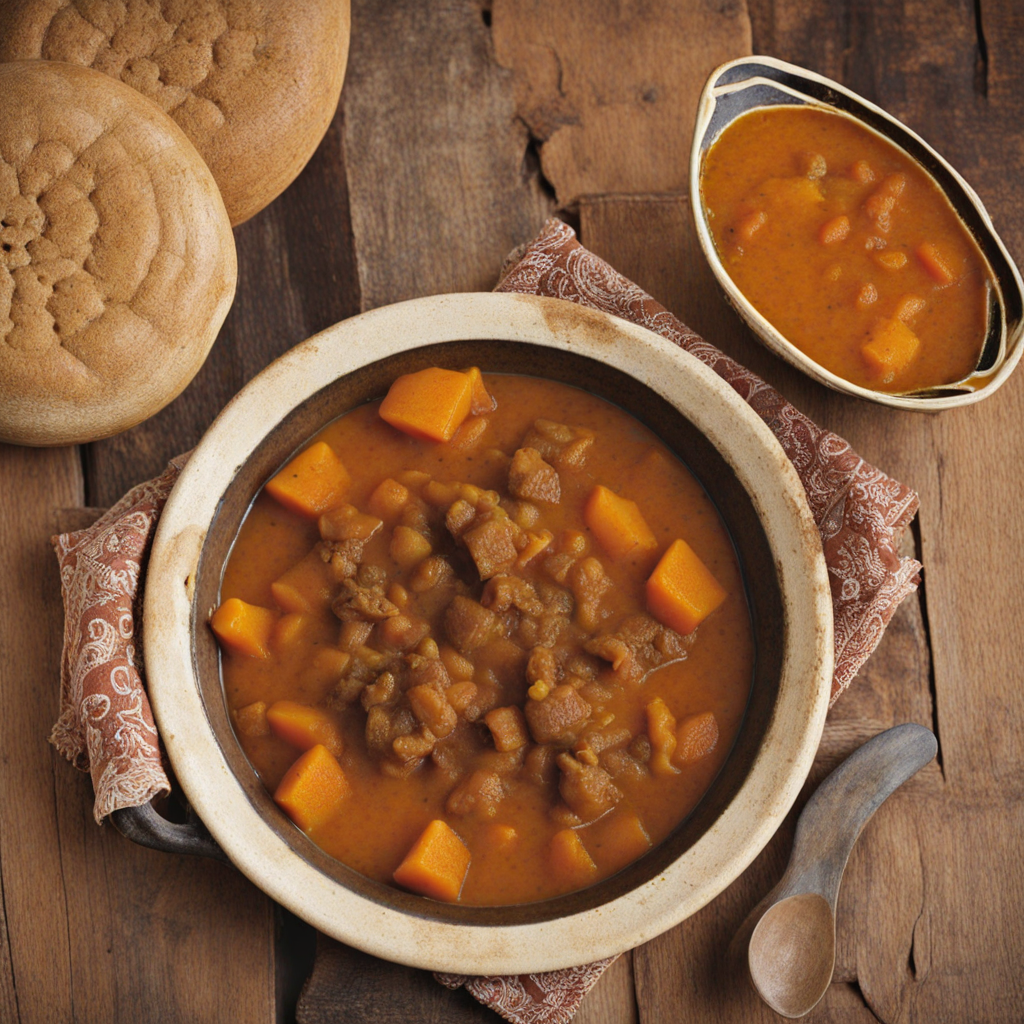Lesotho Fat Cakes
Lesotho Fat Cakes, also known as 'mofemohale' in the local language, are delightful deep-fried pastries that capture the essence of Basotho cuisine. These golden-brown treats are made from a simple dough of flour, sugar, yeast, and a pinch of salt, which is then allowed to rise before being shaped into round balls. The result is a soft, airy interior that contrasts beautifully with the crispy exterior, making each bite a delightful experience. Often enjoyed warm, they can be served plain or with a dusting of powdered sugar for a hint of sweetness. Typically enjoyed as a snack or a breakfast item, Fat Cakes are incredibly versatile. They can be enjoyed on their own or paired with various accompaniments like jam, honey, or even savory dips, giving each eater the chance to customize their experience. In Lesotho, these treats are often sold by street vendors, where the aroma of frying dough fills the air, enticing passersby to indulge in this local favorite. The simplicity of the ingredients and the cooking method makes them a beloved staple in households across the country. What makes Lesotho Fat Cakes truly special is their connection to community and culture. They often feature in gatherings and celebrations, symbolizing hospitality and warmth. The act of sharing these pastries brings people together, making them more than just a food item but a part of cherished traditions. As you explore the taste of Lesotho Fat Cakes, you’ll not only enjoy their flavor but also connect with the rich cultural heritage they represent, making every bite a step into the heart of Basotho life.
How It Became This Dish
Origin of Mageu Mageu is a traditional fermented beverage originating from the southern African nation of Lesotho, where it has been consumed for centuries. Its roots can be traced back to the Basotho people, who have inhabited the region for generations. Mageu is primarily made from maize (corn) and is similar to the porridge-like beverages found in other parts of Africa, but it possesses a unique cultural and culinary identity. The process of making Mageu begins with the fermentation of maize meal, which is mixed with water and left to ferment naturally. This fermentation process can take several days, allowing the natural lactic acid bacteria to develop, resulting in a tangy flavor and slightly thick consistency. The beverage is often described as having a creamy texture and a sour, refreshing taste, making it a staple in the Basotho diet. Cultural Significance Mageu holds a significant place in the cultural fabric of Lesotho. It is more than just a drink; it is a symbol of hospitality and community. Traditionally, Mageu is served during social gatherings, celebrations, and rituals, where it embodies the spirit of sharing and togetherness. It is common to find Mageu served to guests as a sign of respect and welcome. In Basotho culture, Mageu is often consumed during important ceremonies, such as weddings and initiations, where it is believed to bring blessings and good fortune. The drink is also associated with the agricultural calendar, as maize is a staple crop in Lesotho, signifying sustenance and survival. Moreover, the fermentation of Mageu is considered a communal activity, reinforcing bonds among family and community members as they come together to prepare the beverage. Development Over Time The evolution of Mageu has been influenced by various factors, including colonialism, globalization, and changing dietary habits. During the colonial period, the introduction of new ingredients and methods of production led to variations in the traditional recipe. For instance, some modern versions of Mageu may incorporate additional flavors or sweeteners, reflecting the influence of contemporary tastes and preferences. Despite these changes, the core essence of Mageu has remained intact. Many Basotho still prepare Mageu using traditional methods, valuing the connection to their ancestors and cultural heritage. The drink is often made at home, and families may have their own unique recipes passed down through generations. This continuity of tradition helps to preserve the cultural significance of Mageu in the face of modernization. Mageu in the Modern Era In recent years, there has been a renewed interest in traditional foods like Mageu, as people seek to reconnect with their cultural roots and promote local products. This resurgence is partly due to the growing awareness of the health benefits associated with fermented foods, which are rich in probiotics and contribute to gut health. Mageu, with its natural fermentation process, is being recognized not only as a traditional beverage but also as a nutritious option. Additionally, the globalization of food culture has led to the commercialization of Mageu. Various brands have emerged, producing bottled versions of the beverage for broader markets, both locally and internationally. This has helped to introduce Mageu to a new audience while also raising awareness of Basotho culture. However, this commercialization comes with challenges, as it risks overshadowing the artisanal methods and community practices that have defined Mageu for centuries. The Role of Mageu in Society Mageu plays a vital role in the economy of Lesotho, particularly in rural areas where it is often produced and sold by local women. The production of Mageu can provide a source of income for families, empowering women and promoting entrepreneurship. Many women engage in the small-scale brewing of Mageu, selling it at local markets or to neighbors, thus contributing to the local economy while preserving their culinary traditions. Moreover, Mageu has become a part of the national identity of Lesotho, representing resilience and adaptability. As the country navigates modern challenges, the beverage serves as a reminder of the importance of cultural heritage and the ways in which traditional practices can coexist with contemporary life. Efforts to promote Mageu as a cultural product are also supported by initiatives focused on sustainable agriculture and food security, highlighting its relevance in today’s society. Conclusion: The Future of Mageu The future of Mageu looks promising, as there is a growing appreciation for traditional foods and a desire to maintain cultural practices. Educational programs and cultural festivals in Lesotho are increasingly incorporating Mageu, fostering a sense of pride among the younger generations. This revitalization of interest not only ensures the survival of Mageu as a beverage but also reinforces its role as a cultural emblem. As Lesotho continues to embrace modernity while honoring its past, Mageu stands as a bridge between generations, connecting the Basotho people to their heritage. Whether enjoyed at communal gatherings or as a daily refreshment, Mageu remains a cherished part of life in Lesotho, embodying the resilience, creativity, and communal spirit of its people. Through the lens of Mageu, one can appreciate not only the culinary richness of Lesotho but also the deep cultural narratives that flavor its history.
You may like
Discover local flavors from Lesotho







